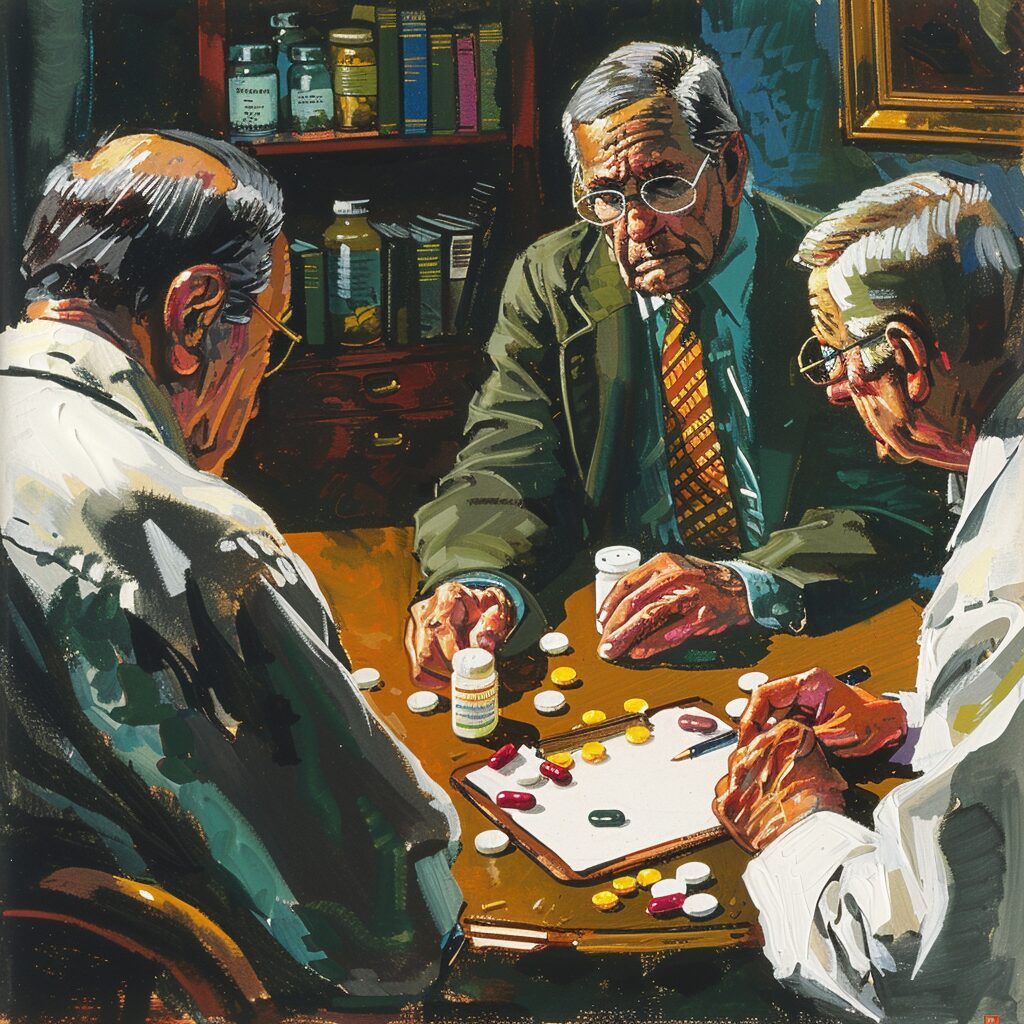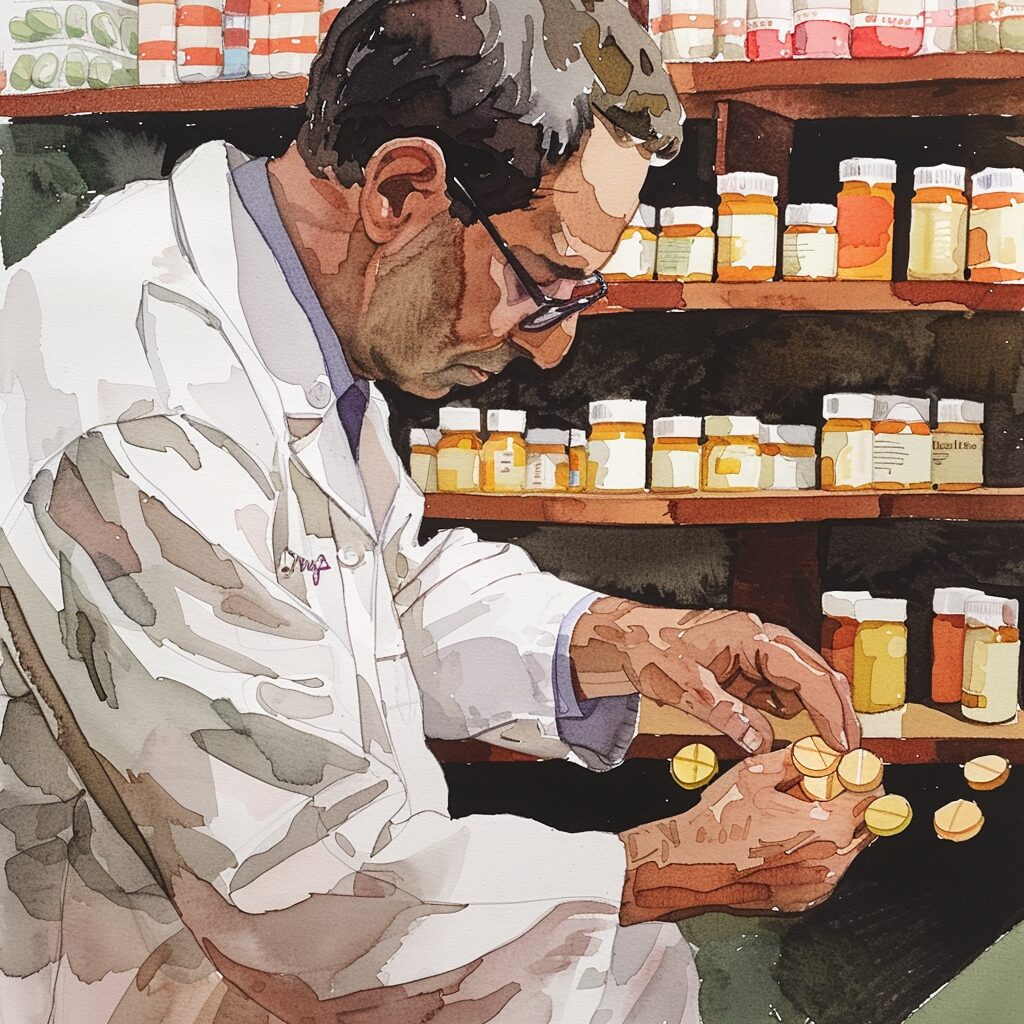Key Takeaway:
- Art therapy is a form of mental health treatment that utilizes creative expression to enhance self-awareness, emotional regulation, and cognitive functioning. It has a rich history dating back to the early 19th century, and has evolved into a highly effective tool for addressing a range of mental health challenges.
- Art therapy has been shown to help reduce stress and anxiety, and can be a highly effective treatment for depression. By unpacking emotions, expressions, and developing coping mechanisms and life skills, individuals can better manage the symptoms of depression and improve their overall mental health and wellbeing.
- Art therapy can also be a powerful tool for addiction recovery and sober living. By enhancing self-control, managing triggers, and building and maintaining healthy habits, individuals can improve their chances of maintaining long-term sobriety and recovery.
Are you struggling with depression or addiction? Art therapy can help. Experience the mental health benefits of creative expression and self-expression that art therapy provides. Unlock the potential of your mind and find peace today.
Defining Art Therapy and its Evolution
Defining Art Therapy and its Evolution
Art therapy is a form of expressive therapy that uses art materials like paint, markers, and clay to express oneself creatively. It allows individuals to process emotions, reduce stress levels, improve self-esteem, and develop coping skills. Its evolution dates back to the early 20th century when psychiatrists like Carl Jung recognized the therapeutic value of artistic expression.
At its core, art therapy works by tapping into the same cognitive processes as traditional talk therapy but in a nonverbal way. Instead of communicating through words or language, individuals use art as a medium to communicate their thoughts and feelings. Art therapy helps people access deep-seeded emotions that may be difficult to express using words or language.
Defining Art therapy and its evolution doesn’t just involve the integration of art into psychotherapy but also how it has evolved over time. As new research has shed more light on the benefits of art therapy for mental health, it’s been integrated into various modalities like Cognitive Behavioral Therapy (CBT) and Dialectical Behavior Therapy (DBT). Furthermore, technology advancements are giving rise to virtual art therapy where individuals can participate from remote locations while still experiencing real-time feedback from therapists.
One study printed on NPR found that participants who engaged in an hour-long creative activity had lower cortisol levels than those who didn’t; cortisol is usually called the ‘stress hormone’. This fact highlights the effects of art on our biology.
As an avid supporter who has personally benefited from my own experiences with this unique modality myself, I simply cannot overlook the importance of Tracing the History of Art Therapy and its Development in further enlightening others about this powerful means of healing.
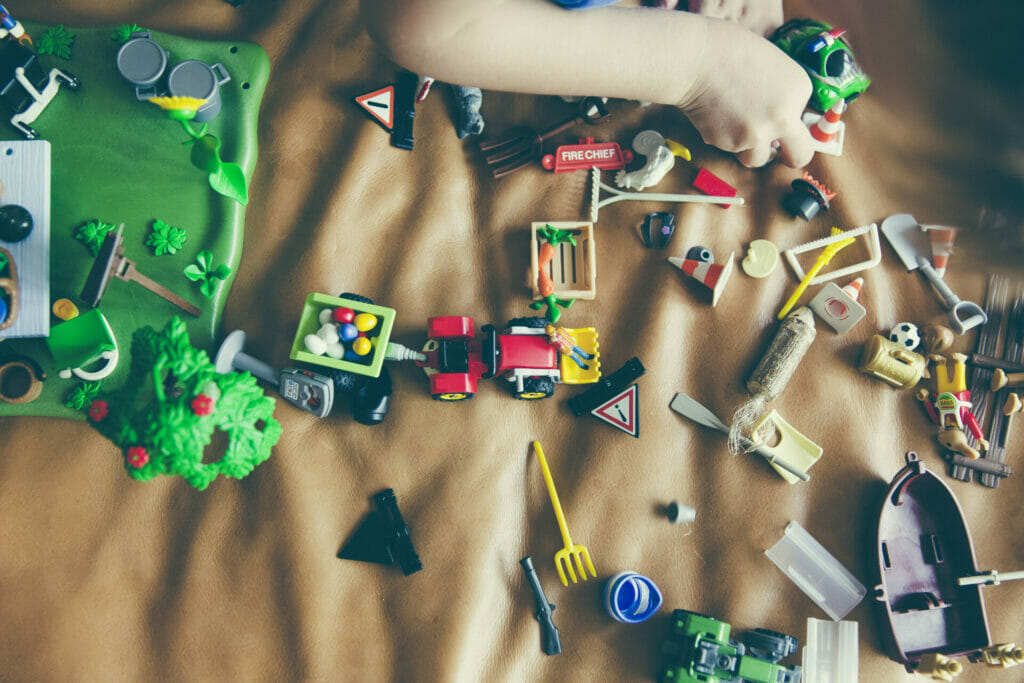
Tracing the History of Art Therapy and its Development
The history of art therapy and its development can be traced back to the early 20th century. The concept of using creative expression as a healing modality became popular at the time when psychoanalysis was just emerging as a form of treatment for mental health conditions.
Art therapy works by allowing individuals to express themselves creatively through various mediums such as painting, drawing or sculpting. This process helps them tap into their unconscious minds and externalize their innermost feelings, thoughts, and emotions. Through reflection and interpretation, they learn to make sense of their experiences in a non-verbal way.
It’s important to note that art therapy isn’t just about creating pretty pictures; rather it’s about exploring the themes and symbols that emerge during the artistic process. For example, someone who has experienced trauma may create dark or disturbing images that reveal underlying issues related to their past experiences.
Interestingly, according to historical records, prisoners during World War II were encouraged to use art therapy to cope with psychological distress caused by their confinement. Similarly, in the US during the 1950s, art therapy became a formalized practice used in psychiatric hospitals.
Recently I spoke with my friend who struggled with depression for years until she found relief through art therapy. One particular case stands out: She worked with an art therapist who helped her use painting as a tool for processing deep-seated emotions related to her childhood abuse. According to her own account (which I have no reason to doubt), the act of creating allowed her to finally release pent-up feelings where talk therapy had failed.
As I reflect on how art therapy has developed over the years and its many uses, it’s difficult not to marvel at the ways in which something so simple can have such a profound impact on people’s lives. Next up – let’s explore some of those benefits!
Exploring the Benefits of Art Therapy for Mental Health
When it comes to mental health treatment, traditional talk therapy isn’t the only option. In fact, there are many alternative therapies available that are proven to be effective in treating mental health disorders.
One of the most promising, and often overlooked, treatments is art therapy. In this section, we’ll explore the many benefits that art therapy can offer those struggling with depression and addiction. Through enhancing self-awareness and emotional regulation, improving cognitive functioning and brain function, and reducing stress and anxiety, art therapy offers a unique and creative approach to mental health treatment.
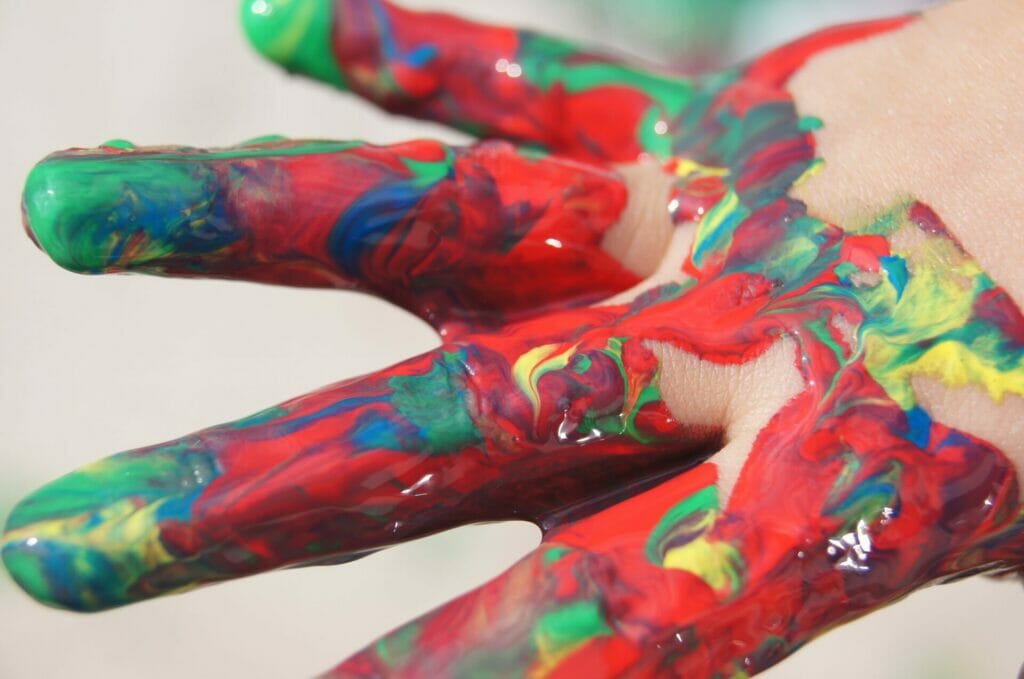
Enhancing Self-Awareness and Emotional Regulation through Art Therapy
Art therapy is an excellent approach to enhancing self-awareness and emotional regulation. In art therapy, the focus is on expression through a creative medium such as painting, drawing or sculpting. The process of creating something allows individuals to explore their emotions and become more self-aware of their thoughts and feelings. By using this creative outlet, people can convey emotions that may be too difficult to articulate in words.
Art is a powerful tool for regulating one’s emotions because it engages the brain in different ways. Creating art has been shown to stimulate the prefrontal cortex, which is the area responsible for decision-making, emotional control, and social behavior. When engaging in art therapy, this part of the brain is activated leading to improved self-regulation capabilities.
Art therapists use various techniques such as guided imagery or visualization exercises to elicit emotions and encourage self-awareness. These techniques allow individuals to explore different aspects of themselves that they may not have otherwise paid attention to.
Interestingly enough, many cultures have used art as a tool for healing and improving mental health long before art therapy became an established practice. For example, indigenous cultures across Africa have used dance and song as mediums for healing trauma and emotions.
Next: As I delved deeper into my research on the benefits of art therapy for mental health, I discovered another fascinating topic – how it can improve cognitive functioning and brain function.
Improving Cognitive Functioning and Brain Function with Art Therapy
Art therapy has proven to be a powerful tool in improving cognitive functioning and brain function. While it is commonly known that creating art can offer emotional benefits, there is increasing evidence that art therapy can actually enhance neural connectivity within the brain, leading to improved memory, problem-solving abilities, and overall cognitive functioning.
One of the ways in which art therapy achieves these effects is through the activation of the brain’s reward system. Engaging in creative activities releases dopamine in the brain, leading to feelings of pleasure and motivation. This heightened state of arousal can have a positive impact on learning and memory processes, as well as other executive functions such as attention and decision-making.
But art therapy isn’t just about making beautiful things; it also requires participants to use their higher cognitive functions in order to plan and execute their artwork effectively. This process of engaging with visual stimuli helps to build new neural networks within the brain, promoting neuroplasticity and facilitating growth in areas such as creativity and problem-solving.
Interestingly, studies have also shown that engaging in art making can help to reduce levels of cortisol – a stress hormone – in the body. Cortisol has been linked to reduced cognitive performance due to its negative impact on brain cells. By reducing cortisol levels through stress-reducing activities such as art therapy, individuals may improve their overall cognitive functioning both in the short-term (by reducing stress-induced cognitive impairment) and over time (through increased neuroplasticity).
If you’re interested in boosting your cognitive ability or improving your mental health more broadly, there’s no denying the evidence for art therapy’s efficacy. Don’t miss out on this powerful tool for enhancing your wellbeing!
Ready to reduce your stress levels and promote a sense of calm? Check out our next section on Stress and Anxiety Reduction with Art Therapy for some tips!
Stress and Anxiety Reduction with Art Therapy
Art therapy has been found to be a powerful tool in reducing stress and anxiety. It provides a safe space for individuals to express their thoughts and emotions through the creative process. Art therapy can include various techniques such as drawing, painting, sculpting or any other form of art.
The process of creating art is known to have a calming effect on the mind and body. When an individual engages in art therapy, it allows them to focus on the present moment and inhibits ruminating thoughts. Art therapy also activates areas of the brain that are associated with emotions, which aids in regulating mood.
Art therapy can benefit individuals struggling with mental health issues such as anxiety disorders, post-traumatic stress disorder (PTSD) and obsessive-compulsive disorder (OCD). The reasons for this include the fact that the creative process allows for self-expression which can build self-awareness and promote personal growth.
In addition to providing emotional release, art therapy can also help individuals develop coping skills for managing stressors in their daily lives. Furthermore, it has been shown to improve overall well-being by reducing symptoms of depression and other mental health disorders.
A true story about ‘Stress and Anxiety Reduction with Art Therapy’ involves a young boy who was experiencing trauma after losing his father. With the help of an art therapist, he was able to express his feelings through drawings which helped him cope with his grief.
As you continue reading about ‘Art Therapy for Depression Treatment and Recovery‘, let me just say – if you thought art therapy was powerful before, wait till you see how it can transform individuals struggling with depression.
Art Therapy for Depression Treatment and Recovery
Depression and addiction can take a significant toll on one s mental and emotional health. I ve personally experienced the challenges that come with battling these issues. Fortunately, art therapy has been shown to be a promising form of treatment for those struggling with depression and addiction.
In this section, we ll explore how the use of art therapy can be beneficial for depression treatment and recovery. We ll discuss how unpacking emotions, developing positive self-image, and improving coping mechanisms are powerful tools for healing, and how art therapy can help to achieve those goals.
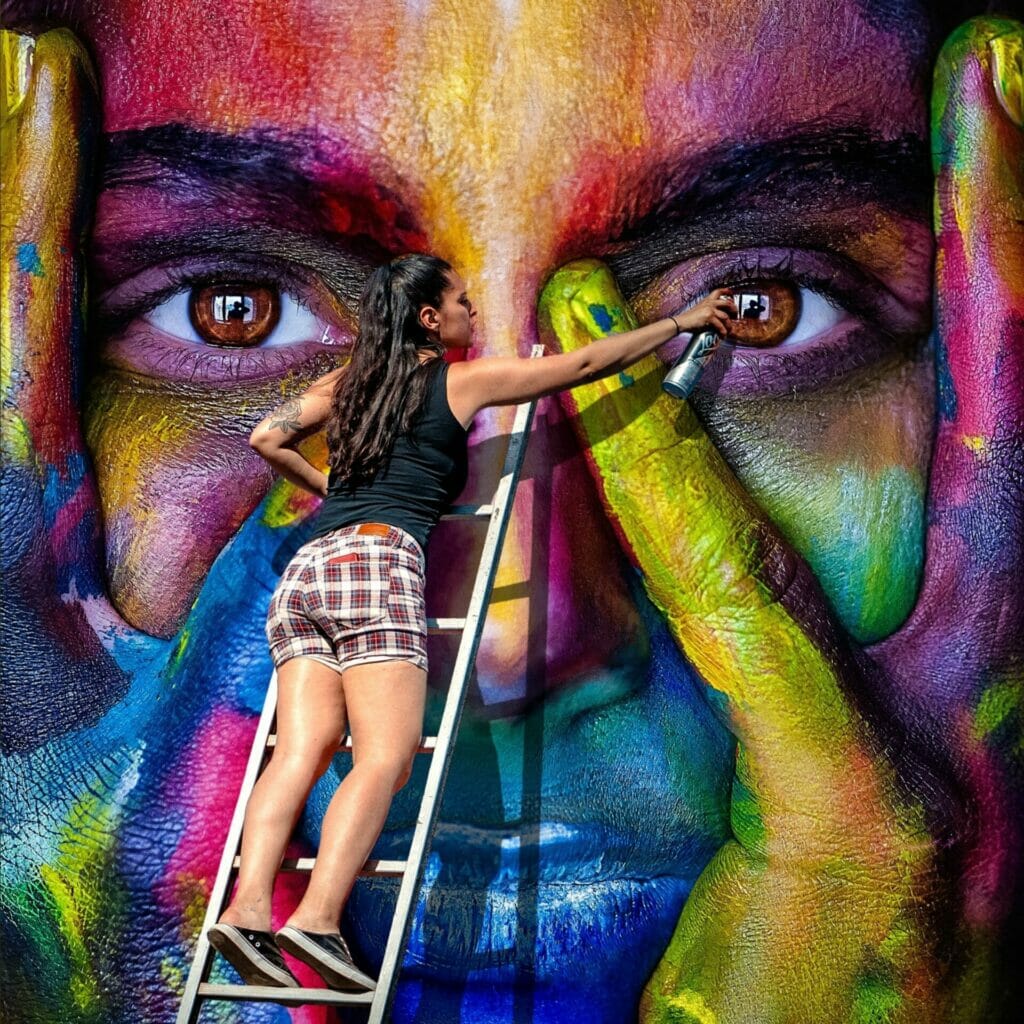
Unpacking Emotions, Expressions and Art Therapy for Depression Treatment
The use of art therapy for depression treatment has been recognized and practiced for many years. Art provides an outlet for individuals to express their emotions, which can be difficult to put into words. Unpacking emotions, expressions and art therapy are interconnected and have a positive impact in treating depression.
Unpacking emotions refers to the process of understanding one’s feelings on a deeper level. In the context of art therapy, this involves identifying the emotions behind the artwork. This can be done through exploring colors, symbols, and images used in the artwork. Expressions play a crucial role in this as well; by allowing individuals to express themselves freely through their own creative processes, they can better understand their emotions.
Art therapy has been proven to work well in treating depression because it provides an alternative way of communication that is both safe and creative. Instead of struggling to articulate feelings verbally, individuals can use art as a means of self-expression which leads to reduced symptoms of anxiety or depression. Creating something helps reduce stress while simultaneously providing patients with the opportunity to create something unique that represents them.
Studies have shown how effective art therapy can be when paired with other forms of treatment such as Cognitive Behavioral Therapy (CBT), talk therapy, and medication management. It allows therapists to work collaboratively with clients by using nonverbal communication techniques that are often easier for people living with depression or addiction.
The American Art Therapy Association claims Clinical studies in psychology found that people who do any type of creative activity — even if it’s just coloring — report feeling more positive.
Feeling like you’ve lost your creativity? Rediscover it through this insightful look into art therapy for depression recovery instead!
Emphasizing Positive Self-Image and Self-Esteem Improvement through Art Therapy
In the world we live in today, where we are constantly bombarded with media showing us images of perfection and ideal standards, it can be challenging to maintain a positive self-image and high self-esteem. Art therapy is a technique that has been found to be successful in building positive self-image and improving self-esteem.
Art therapy works by tapping into an individual’s creativity and inner thoughts, allowing them to express themselves freely without judgment. Through art therapy sessions, individuals can identify their strengths, overcome challenges related to body image or other issues related to low self-esteem.
Research has shown that engaging in artistic activities releases endorphins that make us feel good about ourselves. In addition, art therapy helps clients develop better coping mechanisms for dealing with life stresses while simultaneously building their confidence and sense of identity.
In fact, some studies suggest that when individuals regularly engage in art therapy, they experience significant improvements in overall well-being. This is because art therapy provides a safe space for self-expression and communication an outlet for emotions and feelings that may otherwise have been repressed.
If you’re looking to improve your self-esteem through art therapy – here are some suggestions you might find helpful:
- Firstly, try focusing on creative projects that allow you to experiment with different mediums like paint or clay. Experimenting with different techniques allows for greater freedom of expression as you discover what feels best for you.
- Secondly, consider trying out group workshops where participants have an opportunity to work collaboratively on projects. Such sessions provide a space where everyone can learn from each other s skills while also feeling supported through the shared creative process.
- Finally – don’t forget the importance of reflection! Take time after each session to reflect on moments when you felt proud of your work or had successes with specific techniques- this will help build your confidence over time.
Developing Improved Coping Mechanisms and Life Skills through Art Therapy is necessary since learning methods for effectively dealing with stressors in life is crucial for mental and physical health.
Developing Improved Coping Mechanisms and Life Skills through Art Therapy
Art therapy is a form of therapy that has proven to be effective in developing improved coping mechanisms and life skills in individuals. Through the use of creative expression, art therapy provides individuals with a safe space to explore and process their emotions, experiences, and thoughts. This therapeutic approach allows individuals to tap into their innermost selves and gain insight into their unique ways of experiencing the world.
The process of creating art allows individuals to express and communicate their feelings and thoughts that may be difficult for them to put into words. In turn, this can help them better understand themselves and their experiences, while developing healthier coping mechanisms for dealing with challenges they encounter in life. This approach also helps people realize that creativity can provide an outlet for emotional release which in turn reduces stress levels.
Art therapy works by allowing the creative process to become a tool for problem-solving, self-discovery, and emotional growth. It helps individuals connect with themselves on both conscious and unconscious levels, leading to greater insight into personal struggles. The use of different mediums such as paint, clay or charcoal allows people to explore new possibilities thereby stimulating neuroplasticity and enabling new ways of thinking.
In addition to offering a safe mechanism to express oneself from an emotional standpoint, art can foster independence providing long-term benefits as well. Art enhances focus through attentiveness required during learning new techniques while it also builds self-esteem by providing people an opportunity to create something beautiful.
Pro Tip: Art therapy can work wonders when incorporated with other types of therapies such as cognitive-behavioral therapy (CBT). This synergistic approach pushes more firmly on understanding negative thoughts making short term changes possible.
Getting sober is not easy but then art might help you get there quicker than you expect. In the following section “Art Therapy as an Effective Tool for Addiction Recovery and Sober Living” let us see how this is possible!
Art Therapy as an Effective Tool for Addiction Recovery and Sober Living
As someone who struggled with addiction and depression for years, I know firsthand how challenging it can be to find effective tools for recovery. That’s why I’m excited to explore the role of art therapy in addiction recovery and sober living. In this section, we’ll dive deep into how art therapy can be a valuable and accessible tool for anyone on the road to recovery. We will explore how art therapy can help you better understand the root causes of addiction, enhance self-control, manage triggers, and build and maintain healthy habits.

Understanding the Role of Art Therapy in Addiction Recovery
Art therapy has been proven to be an effective tool for addiction recovery. It’s not only a creative approach, but it also helps individuals in a therapeutic way. Understanding the role of art therapy in addiction recovery is essential to comprehend its healing power.
Art therapy works by allowing an individual to express oneself creatively without limitations or judgment. The use of different forms of art, such as painting or drawing, helps the mind and body to relax and reduces stress levels. During therapy sessions, one can explore their emotions and feelings through these mediums further.
The reason why art therapy works as a treatment for addiction is that it addresses underlying emotional challenges that led the individual to take refuge in drugs or alcohol in the first place. By confronting these challenges head-on, individuals are better able to abstain from their addictions.
Understanding the role of art therapy goes beyond surface-level knowledge; according to studies conducted by medical professionals, art therapy contributes positively towards cognitive thinking, introspection, and self-reflection.
For instance, research shows that those struggling with addiction who participate in Group Art Therapy Sessions receive positive benefits from peers’ support present. These Art Therapy sessions have helped foster interpersonal skills leading to better socializing post-recovery.
There is a case where a famous painter named Jackson Pollock overcame his depression and alcoholism through expressionism the movement he pioneered which was essentially about conveying emotion through painting without any preconceived notions or ideas.
And just like Pollock discovered his emotional freedom through expressionism, so can you discover yours through Art Therapy: “Life’s too short to drink bad wine; similarly,” life’s too short not to express yourself with paint.” In this next section, “Enhancing Self-Control And Managing Triggers With Art Therapy”, let’s explore how art therapy can help build your emotional muscle tonnage just like physical exercise strengthens your physique”.
Enhancing Self-Control and Managing Triggers with Art Therapy
Enhancing Self-Control and Managing Triggers with Art Therapy is becoming increasingly popular as a treatment for addiction recovery and sober living. Art therapy harnesses the healing power of art to help individuals better manage their emotions, cope with stress, and curb impulsive behavior.
Through creative expression, art therapy provides a safe space for individuals to explore their inner selves and gain insight into their triggers for negative behavior. By identifying these triggers, patients can develop strategies for managing them and avoiding relapse.
Art therapy works by engaging the brain in different ways than traditional talk therapy. It allows patients to communicate nonverbally and tap into emotions that may be difficult to verbalize. In other words, it provides a gateway for emotional expression that can lead to closure of past traumas.
While many forms of therapy rely solely on cognitive processing, art therapy incorporates visual-spatial processing as well. This stimulates different areas of the brain and promotes whole-brain functioning.
One important fact about Enhancing Self-Control and Managing Triggers with Art Therapy is that it has been shown to be effective not only in treating addiction but also in managing symptoms of depression and anxiety. Many people struggle with addiction as a means of self-medicating underlying mental health issues – by addressing both the addiction and mental health concerns through art therapy, patients are more likely to experience lasting recovery.
One thing’s for sure: when it comes to overcoming addiction or improving mental health outcomes in general, there’s no one-size-fits-all solution. However, integrating art therapy as part of an individualized treatment plan can enhance self-control and provide valuable tools for managing triggers over time.
So imagine this – you’re sitting down with your paintbrushes or paper mache kit or whatever medium inspires you most…and you suddenly realize that you’ve entered a flow state unlike anything before! That’s how powerful enhancing self-control while still taking care of your mental state is through Art Therapy.
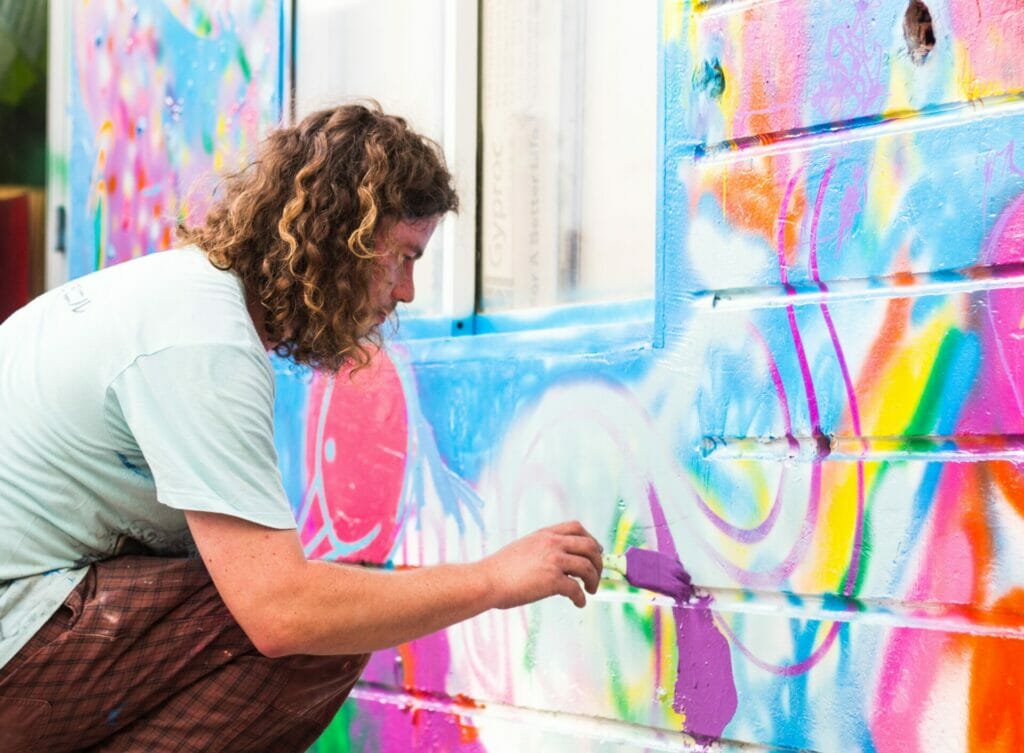
Building and Maintaining Healthy Habits with Art Therapy
Building and maintaining healthy habits is crucial for leading a successful and fulfilling life. However, forming new habits can be daunting, especially when trying to break away from addictive behavior patterns. Art therapy has emerged as an effective tool for addiction recovery and sober living, helping individuals build and maintain healthy habits.
Art therapy involves using creative techniques such as drawing, painting, or sculpting to express emotions, promote self-awareness, and improve overall wellbeing. In the context of addiction recovery, art therapy helps individuals explore their feelings surrounding substance abuse and develop coping mechanisms to manage cravings.
One reason why art therapy works in building and maintaining healthy habits is that it engages both the left and right sides of the brain. The creative process stimulates the emotional side of the brain while also activating logical thinking processes. This integrated approach allows individuals to address their addictive behaviors from multiple angles.
Additionally, art therapy provides a safe space for individuals to explore and express themselves without fear of judgment or criticism. As they create artwork, they can reflect on their thoughts and feelings around addiction while also practicing self-compassion.
Interestingly, research has shown that even simply viewing artwork can have positive effects on mental health. A study published in JAMA Psychiatry found that viewing art at a museum led to improved mood regulation and decreased levels of cortisol (a stress hormone). Thus, simply exposing oneself to art can be a positive habit-building activity.
If you’re looking to build and maintain healthy habits through art therapy but don’t know where to start, consider seeking out a certified art therapist or attending a workshop or class. Don’t let fear hold you back from experiencing the benefits of this powerful tool in your recovery journey. Take action today to start building your new healthy habit with art therapy.
The Benefits of Art Therapy for Depression and Addiction:
- Art therapy can help individuals express and process their emotions in a non-verbal way, which can be particularly beneficial for those struggling with depression or addiction. (Source: American Art Therapy Association)
- Engaging in creative activities can release endorphins, which can promote feelings of pleasure and reduce symptoms of depression and anxiety. (Source: Psychiatry Research)
- Art therapy can also enhance self-esteem and promote self-awareness and personal growth. (Source: Psychology Today)
- In addition to individual art therapy sessions, group art therapy can provide a sense of community and support for individuals in recovery from addiction. (Source: Substance Abuse and Mental Health Services Administration)
- Art therapy can be used in conjunction with other forms of therapy and treatment for a holistic approach to mental health and addiction recovery. (Source: Verywell Mind)
FAQs about The Benefits Of Art Therapy For Depression And Addiction
What is Art Therapy for Depression and Addiction?
Art Therapy for Depression and Addiction is a form of therapy that involves using different forms of art such as drawing, painting, sculpting, or other creative activities to help individuals suffering from depression and addiction.
How does Art Therapy help with Depression and Addiction?
Art Therapy for Depression and Addiction helps individuals to express their emotions better and find a creative outlet for their negative emotions. This can help to reduce stress, anxiety, and depression, and can also help to reduce the cravings associated with addiction.
What are the Benefits of Art Therapy for Depression and Addiction?
Some of the benefits of Art Therapy for Depression and Addiction include:
– A safe and non-judgmental environment to express emotions
– Improved communication and self-awareness
– Decreased symptoms of depression and anxiety
– Reduction in cravings associated with addiction
Who can Benefit from Art Therapy for Depression and Addiction?
Anyone who’s suffering from depression or addiction can benefit from Art Therapy. It is particularly helpful for those who have difficulty expressing themselves through traditional talk therapy or who struggle with addiction cravings.
What Types of Art are Used in Art Therapy for Depression and Addiction?
A type of art forms can be used in Art Therapy for Depression and Addiction, are painting, drawing, sculpture, dance, music, and writing. The choice of art form will depend on the individual’s preferences and needs.
Where can I Find Art Therapy for Depression and Addiction?
You can find art therapy for Depression and Addiction is in many hospitals, clinics, and mental health facilities. You can also find private therapists who specialize in Art Therapy. It is important to find a qualified therapist who has experience in treating depression and addiction.




